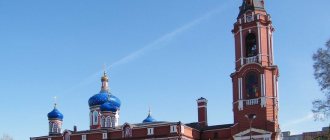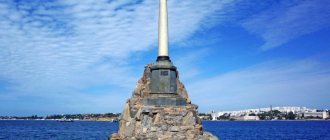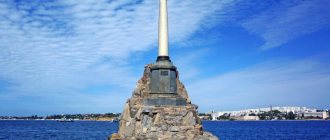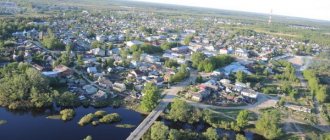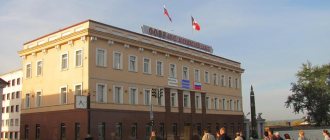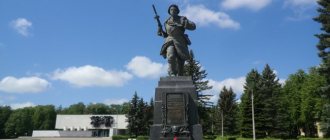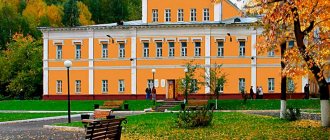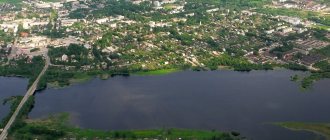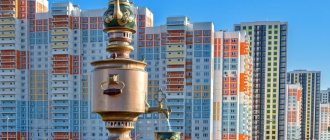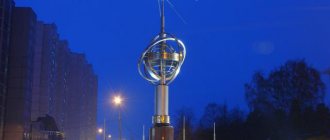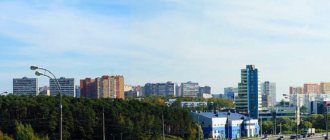Story
The city of Lobnya arose as a result of the expansion of the station village and its merger with surrounding settlements. Their common history goes back several centuries.
History of the area
The oldest of the settlements, the village of Kiovo, was first mentioned in the Spiritual Charter of Prince Ivan Yuryevich Patrikeev, dated 1495, according to which Patrikeev’s possessions, including the village of Kiovo, were inherited by his sons, Vasily and Ivan.
During the Time of Troubles, the village disappeared, the area became a wasteland, repopulated only in 1623, when the Bornyakov brothers received it into possession from Tsar Mikhail Romanov. The newly emerged village of Kiovo after some time passed into the hands of the boyar Bogdan Matveevich Khitrov. He improved the village and built a wooden church of the Savior Not Made by Hands, after which the village began to be called Kiovo-Spasskoye. In 1769, on the site of a wooden church, Count Ivan Illarionovich Vorontsov built a stone one, which has survived to this day. In 1902, a primary zemstvo school was opened in Kiovo.
In 1814, the merchant Kozma Krestovnikov acquired the lands of the Polyana wasteland near the Alba River (Meshcherikha) and founded a weaving industry there. At first it was an office to which a merchant brought yarn from Moscow, distributing it to peasants from the surrounding villages; local women wove a variety of fabrics at home. Later, Krestovnikov’s sons built small houses in Polyana, where they installed looms for the peasants who came to work here. In 1850, the Krestovnikov brothers built a paper spinning factory, but after 4 years it was closed due to falling profits. In 1879, the rapid development of the workers' settlement began - a barracks, a bathhouse, and a trading store appeared on the territory of the factory. At the turn of the 19th and 20th centuries, a hospital, three more barracks, and houses for the factory management and craftsmen were built.
City `s history
In 1902, the Lobnya railway station of the Savelovskaya railway was opened. The station was named after the Lobnenka River, a station village began to form around it; in the 1911 directory it was called the “Lobnya dacha area.”
At the same time, on the southern outskirts of the village of Katyushki, a farmstead of the Moscow Nikitsky Convent arose, where in 1904 a church in the name of Seraphim of Sarov and a school were opened.
In 1912, a few kilometers from the railway station, the development of a forest plot began for the educational and demonstration farm of the Petrovsky Agricultural Academy; in 1922 it was transformed into the Lugovoi Institute (now the Williams All-Russian Research Institute of Feed).
During the Battle of Moscow during the Great Patriotic War, fierce battles with the enemy were fought in the Lobnya area. The village of Krasnaya Polyana, now part of the city, became known as the point where the enemy came closest to the capital. The liberation of Krasnaya Polyana is considered a turning point in the battle for Moscow.
By decision of the Moscow Regional Executive Committee No. 1838 of August 18, 1947 and the Decree of the Presidium of the Supreme Soviet of the RSFSR, which approved it, of September 26 of the same year, the working village of Lobnya was formed on the territory of the Kiovsky Village Council of the Krasnopolyansky District. It is worth noting that earlier, in 1940, the formation of the holiday village of Lobnya was planned, but it was not supported by the Presidium of the Supreme Soviet of the RSFSR.
The station workers' village of Lobnya was transformed into a city on December 18, 1961 by Decree of the Presidium of the Supreme Soviet of the RSFSR.
On March 14, 1975, Lobnya became a city of regional subordination with a population of 47.4 thousand people.
In 1976, the dacha village of Lugovaya was administratively subordinated to the city.
Since December 29, 2004 - “Lobnya urban district”.
Lobnya: what a tourist should see in 1 day
On the territory of Lobnya there are several significant objects from a historical and cultural point of view, for which tourists should visit this city. The most important sights, reflecting the features and specifics of the city, are highlighted at the beginning of the article.
Square of the Defenders of Moscow and the memorial sign “Line of Defense”
- Address: Lenin street.
In Lobnya, much is connected with the Great Patriotic War; the city was awarded the honorary title “Settlement of Military Valor,” which is quite natural. In 1941, fierce battles for the capital were fought on the territory of the city; the last line of defense of Moscow was located 31 kilometers from the Kremlin walls.
Here the Red Army stopped the enemy, preventing him from entering the capital. The city honors the memory of the heroic days of defense and is proud of its historical role, which is reflected in the city’s sights. The “Square of Defenders of Moscow” has been established in the city. Its territory is being actively improved.
As part of the “Line of Defense” project, in the year of the 70th anniversary of the Victory, on July 25, 2015, a memorial sign “Moscow Line of Defense 1941” was installed here. It is a structure of three narrow vertical steles, reminiscent of spears, on which a five-pointed star is mounted, framed by a “St. George’s ribbon”, in the center of which there is an inscription reflecting the name.
Monument "Anti-aircraft gun"
- Address: corner of Batareinaya street and Bukinskoe highway.
Not far from the modern memorial sign, since 1967, there has been the most famous military monument of Lobnya, recognized as an object of historical and cultural heritage of Federal significance.
The monument reminds us of the feat of the 13th battery of the 864th anti-aircraft artillery regiment, whose fighters played an important role in containing the enemy in the battles of December 1-3, 1943.
This information is reflected on the pedestal of the monument, which reproduces an 85-caliber anti-aircraft gun. The creator of the monument is architect I.A. Upland. It was opened on the eve of the 50th anniversary of October.
Church of the Savior Not Made by Hands
- Address: st. Kiovo, 25A.
The oldest monument of church architecture within Lobnya is a legacy of the 18th century. The prehistory of the city of Lobnya goes back to several villages that existed in these lands. One of them was called Kiovo in honor of the local lake.
In this settlement, through the efforts of Count Vorontsov in 1764-1769. A baroque style stone temple was built. According to one version, its architect is Karl Blank, but the name of the architect is not known for certain. The temple, consecrated in honor of the Savior Not Made by Hands, replaced an older wooden church, built back in the 1660s by order of the owner of these lands - B. M. Khitrovo.
In 1900, the Church of the Savior Not Made by Hands underwent reconstruction, in particular, arches were built on the south side. During Soviet times, the temple was closed, its premises were used for economic and industrial needs.
The historical and religious landmark began to perform church functions again in 1988, and restoration was carried out. The temple was given the status of a monument of Federal significance.
Museum of the History of the City of Lobnya
- Address: st. Zhirokhova, 2.
The museum of local history began its history as the Museum of Military and Labor Glory. The initiative to create it was taken by Great Patriotic War veteran Prokopiy Kolychev, an honorary citizen of the city of Lobnya. The exposition opened its doors in 1981.
Military themes still occupy a central place in the exhibition. The “Military Glory” hall is dedicated to the events of the Defense of Moscow and the Great Patriotic War in general, its participants and heroes, where documentary evidence, material sources, and photographs are presented. The main exhibit of the “military section” is considered to be the painting “Fight of Anti-Gunners on December 3, 1941”, written by the artist V. I. Korobkov.
The museum’s permanent exhibition also includes the “History of Neighborhoods” and “Link of Times” halls, dedicated to the culture and life of the inhabitants of the Lobny lands in different eras. The exhibition recreates the interiors of a Russian hut from the early 20th century and a Soviet apartment.
Nature reserve "Lake Kiovo"
- Address: st. Pavlika Morozova, 1.
There is a nature reserve right in the center of the city of Lobnya. The local lake Kiovo received this status in 1947. The object is recognized as a natural monument of Federal significance. This reservoir is an ancient witness to the entire history of the area, reflected in the local toponymy.
Today one of the streets is named after him. The lake is believed to be of glacial origin. One is not large in size, and the maximum depth is comparable to human height - only about 1.7 meters.
The waters are abundantly covered with vegetation. Among the representatives of the fauna, seagulls are considered the most popular inhabitants. Lake Kiovo seems to be a very picturesque and romantic place, a source of pride for locals and one of the points of attraction for tourists.
Don't miss: The best attractions of the Moscow region
Microdistricts of the city
- Central (between Krupskaya, Druzhby, Promyshlennaya and Bukinsky highway)
- Bukino (between Aviatsionnaya St., Zarechnaya St. and Bukinsky Highway)
- Moskvich (between Lenin, Friendship and Victory streets)
- Yuzhny (south of Krupskaya and Pobeda streets)
- 3rd microdistrict (between Promyshlennaya St., Bukinsky Highway and Nesterikha St., also an industrial zone along Gagarin St.)
- Depot (west of the Savyolovsky railway line, between Rogachevskoe highway and the turn to Lugovaya station)
- Vostochny (east of the Savyolovsky railway line)
- Krasnaya Polyana (on both sides of Krasnopolyanskaya street)
- Katyushki (on both sides of Katyushki Street, including Fizkulturnaya Street and Lobnensky Boulevard)
- Lugovaya (in the area of the Lugovaya railway platform in the Savelovsky direction)
To the south of the Yuzhny microdistrict and to the west of the Krasnaya Polyana microdistrict there are forests that serve as a recreation area for city residents.
To the northwest of the city there are glacial lakes Krugloye, Dolgoye and Nerskoye. Krugloe and Dolgoye are convenient for swimming, relaxing and windsurfing, Nerskoye is for fishing lovers.
Monuments and sculptural decorations of the city
For historical reasons, all the significant and most famous monuments in the city of Lobnya are dedicated to military themes.
Mass grave "Belfry"
- Address: City Park of Culture and Leisure.
The memorial appeared in the western part of the Park of Culture and Leisure in the year of the 55th anniversary of the Victory. The remains of Soviet soldiers discovered at the construction site of a new microdistrict were reburied here.
Erected on May 8, 2000, the monument is a granite arch topped with an Orthodox cross. It was called "Belfry". Today it is positioned as a memorial to all those who died in wars and military conflicts of the 20th century.
Obelisk "Soldier of 1941"
- Address: South Street.
The figure of a Soviet soldier was installed in the Lugovaya microdistrict in memory of the events of December 6, 1941, when the 35th Infantry Division went on the offensive near Lobnya. Historical circumstances are recorded in the inscription on the pedestal.
Stella "To the Pacific Sailors..."
- Address: Moscow Defenders Square.
Among the military units defending Moscow were sailors - a brigade formed from soldiers of the Pacific Fleet. One of the monuments in the “Square of Moscow Defenders” is dedicated to them.
The stele was installed in 1986 through the efforts of the Pacific Fleet Veterans Council. The full name of the Monument is “To the Pacific sailors and Siberian Red Army soldiers who stood to the death at the line of Lobnya in the great battle for Moscow.”
Memorial "Eternal Flame"
- Address: Krasnaya Polyana microdistrict.
On the site of the mass grave between the former villages of Krasnaya Polyana and Puchkovo there is an extensive military memorial that dates back to the 1950s. Its author and initiator of creation was N. Shishkov, an eyewitness to the battles for Moscow.
More than 1,200 soldiers are buried in a mass grave on Puchkovo Field. The names of those who were identified are engraved on the slabs behind the statue of the soldier, the central figure of the memorial. At the foot of the monument the Eternal Flame burns.
Monument "Lorry". Car ZIS-5
- Address: Bukinskoye sh., 39.
In 1984, the legendary ZIS-5 car was placed on a pedestal in Lobnya. Such cars were manufactured in the 30s and were reliable “iron horses” for military drivers of the Great Patriotic War.
The vehicle that became a monument previously belonged to front-line soldier A. Akkuratov. The car was restored by him and was running. The monument was initially christened “Veteran Car of 1943”, then the inscription was shortened to “Veteran-1943”, and the monument began to be called “Lorry”.
Monument to children prisoners of fascism
- Address: City Park of Culture and Leisure.
Two small emaciated children's figures - a boy and a girl - are one of the most touching and poignant military monuments of Lobnya, installed in 2015. It is dedicated to young prisoners of fascist camps. In the images of children, sculptor Dmitry Yamin managed to convey all the pain and hardships of the war.
Science and education
- All-Russian Research Institute of Feed named after. W. R. Williams
- College of Construction Industry and Entrepreneurship
- Institute of Law, Economics and Production
- Institute of Business and Politics
- Modern Humanitarian Academy (NACHOU VPO SGA) on the technical base of school No. 1
- Lobnensky training center
- 10 secondary schools, 1 lyceum and 1 private gymnasium
- Children's art school
- Sports school for judo, sambo, fencing, gymnastics and football (FC "Barcerona Real")
Previously existing educational institutions:
- Lobnensky branch of MESI, closed in 2011
- Institute of Business and Politics (NOANO VPO IBP) on the technical base of school No. 2, closed in 2013
Coat of Arms (1980)
Cultural life of Lobnya: museums, theaters, recreation centers
Everyone will also be able to have a cultural holiday in Lobnya – both tourists and citizens. In addition to the local history museum, there are galleries, permanent exhibitions and theaters.
Art Gallery
- Address: Lenin street, 16.
Honored Artist of Russia Vladimir Ivanovich Korobkov left a noticeable mark on the culture of the city of Lobnya and is the author of heraldic symbols. It was thanks to him that the Art Gallery appeared in Lobnya in 2004. He himself was its first director.
Over the years of its existence, the gallery has become an exhibition platform for more than 100 artists and a venue for cultural and educational events. In particular, the local history seminar “History of the city about the people and for the people” is taking place within its walls.
Soil and Agronomic Museum named after. V.R. Williams
- Address: k1, Science Town.
Arriving in Lobnya, you have the opportunity to go on a unique excursion that will interest everyone who is passionate about agriculture. The city is home to a famous scientific institution - the All-Russian Institute of Feed, named after the famous soil scientist Vasily Robertovich Williams.
The institution operates a “Soil and Agronomic Museum”, which presents materials on biology, geography and ecology, which will be an excellent addition to school and university courses, and for adult tourists will significantly broaden their horizons.
Part of the exhibition is dedicated to the life and work of Williams himself. The museum has a fairly long history; it was officially opened in 1934. The basis of the exhibition was made up of exhibits collected in the century before last, starting from the 1880s.
Theater "Chamber Stage"
- Address: Bukinskoye sh., 31.
The Municipal Drama Theater "Chamber Stage" is one of the most famous cultural institutions of the city, dating back to 1991. The repertoire includes productions aimed at audiences of different ages. The theater is the venue for the annual Russian Classics festival. Troupes from different cities of Russia and foreign groups take part in it.
Theater "Dolls and People"
- Address: Lobnensky Blvd., 9A.
Little spectators and their parents will be warmly welcomed in the cozy hall of the Lobnya puppet theater. The institution sees its mission as “helping adults answer children’s questions.” The theater opened its doors in 1991.
The creation of the theater is associated with the name of the artist, designer and architect Olga Kirillova, she was also its first director. The repertoire includes puppet shows not only for children; there are also serious productions for adults.
House of Culture "Krasnaya Polyana"
- Address: Sportivnaya st., 4.
The House of Culture, created at the Krasnaya Polyana textile factory, has the status of the oldest cultural institution in the city. It was opened in 1928. The building was built according to a standard design and has historical significance associated with the Great Patriotic War.
A people's militia was formed here; people went to the front directly from the building of the Palace of Culture. This fact is recorded on a memorial plaque installed on the facade.
Nowadays the Krasnaya Polyana cultural center is a whole leisure complex. In addition to the concert venue, there is a play center for children called “Fidgets” within its walls, and there is a gym and a gym.
On the basis of the institution there are clubs, sections, and interest clubs. The House of Culture has become a popular place for holding events of various levels - these include events that are significant for the city, and private banquets on special occasions.
House of Culture "Lugovaya"
- Address: 1B, Scientific Town.
The House of Culture, created at the Williams Research Institute, is located on the territory of the scientific town. Operating since 1974. Known as a center for children's and youth creativity. This is a place for creative realization, additional education, and a pleasant pastime.
Vocal, dance and theater groups, both children's and adults, operate at the cultural center. Various classes are offered for the younger generation, from aerobics to English language courses.
Attractions
In the vicinity of Lobnya there is Sheremetyevo International Airport, so the average standard of living of the population is quite high (many work at the airport).
The Lake Kiovo nature reserve has long been the largest breeding ground for black-headed gulls in Europe. Due to swamping of the shores of the lake, since the early 1990s, the colony of gulls has been reduced to several dozen individuals. The seagull is a symbol of Lobnya.
In the north of Lobnya, in the Lugovaya microdistrict, there is a unique architectural monument, one of the world's first hyperboloid structures: a steel openwork mesh tower. The hyperboloid water tower was built according to the design of the great engineer and scientist Vladimir Grigorievich Shukhov (of the more than two hundred towers he built in Russia, only 7 remain, the most famous is the Shukhov Tower on Shabolovka in Moscow). Hyperboloid structures were subsequently built by many famous architects: Gaudi, Le Corbusier, Oscar Niemeyer.
Temples and churches of the city in the vicinity of Lobnya
In Lobnya there are several Orthodox churches that were created or acquired their current appearance already in the era of modern Russia.
Michael the Archangel Church
- Address: st. Lieutenant Boyko, 41A.
In 1861, to commemorate the abolition of serfdom, the factory owners, the Krestovnikov brothers, organized the construction of a chapel in Krasnaya Polyana. It was closed under Soviet rule. Already in the 1990s, the rear of the former chapel was rebuilt, turning into a functioning temple, consecrated in honor of Michael the Archangel.
Temple of Philaret of Moscow
- Address: st. Kalinina, 11.
In honor of Moscow Metropolitan Philaret, a small remarkable church was consecrated in Lobnya, attracting with its rounded shape and shiny silver dome. This is a modern era structure. The church was built in 1996-2001.
Temple of the Icon of the Mother of God “Spreader of the Loaves”
- Address: Polevaya st., 7A, Lugovaya microdistrict.
The cozy wooden church in the Lugovaya microdistrict externally resembles examples of ancient Russian architecture, however, it is a modern building. The initiative to build the temple was expressed by local residents in 2003. The temple was consecrated in 2010 in honor of the “Different of the Loaves” icon.
Russian language
The adjective from the name of the city in the names of local enterprises and organizations is traditionally written with an “e”: Lobnensky (which contradicts the recommendations of the spelling dictionary). Unlike the similar situation with Dubna, the official decisions of local authorities on this matter are unknown.
Many Lobnya residents and surrounding residents (especially the older generation) have the habit of using the preposition na (and not in) together with the word Lobnya, for example: I live in Lobnya, I’ll go to Lobnya. This is a fairly common phenomenon for toponyms that became famous as the names not of populated areas, but of railway stations and platforms (cf.: on Iksha, or even with a change in the type of toponym: live on Dolgoprudnaya instead of live in Dolgoprudny). However, even the local press (the newspaper “Lobnya”) uses the normative in Lobnya.
The addition of the word city makes the choice of preposition unambiguous, so that the clerical phrase in the city of Lobnya (in the city of Lobnya) serves as a compromise between supporters of the normative in Lobnya (in Lobnya) and the local in Lobnya (in Lobnya). (It should be noted that in this turn the word Lobnya is placed in the same case as the generic word city).
In the context of clarifying the location in the city itself, the expression in Lobnya means “in the area of Lobnya station.”
Lobnensky parks and squares
For walks in Lobnya, the local recreation center is perfect, however, if you wish, you can always go a little further, to the Lobnya Forest Park, where unity with nature is more significant.
Park of Culture and Leisure in Lobnya
- Coordinates on the map: 56.013290, 37.471254.
Lobnensky Cultural Park is one of the most recognizable places in the city, a popular venue for events and an area for recreation and entertainment for citizens.
The park has picturesque alleys with flower beds, gazebos, and park sculptures. The infrastructure pays attention to sports; playgrounds and paths for cycling and roller skating are equipped; in the winter, the park attracts skiers. There are separate areas for walking and training dogs.
There is a pond on the territory where a popular water attraction operates. The park also offers other entertainment aimed at both children and adults.
Other interesting places
Guests are encouraged to explore other cultural sites and attractions. For example, a hyperboloid water tower, the design of which was created by V. G. Shukhov, a famous engineer and scientist. He built about 200 towers throughout Russia, but to date only seven of them have survived.
The Williams Museum is also worth a visit. Farming and agriculture lovers will love it there. Here you can see various types of vegetation and buy seeds.
